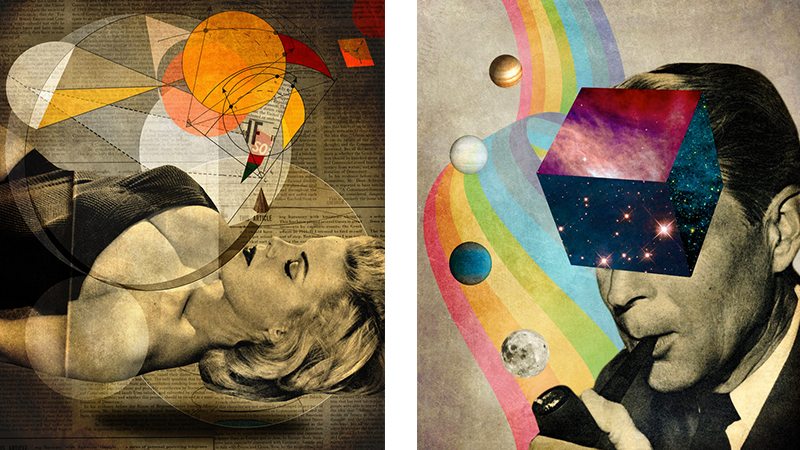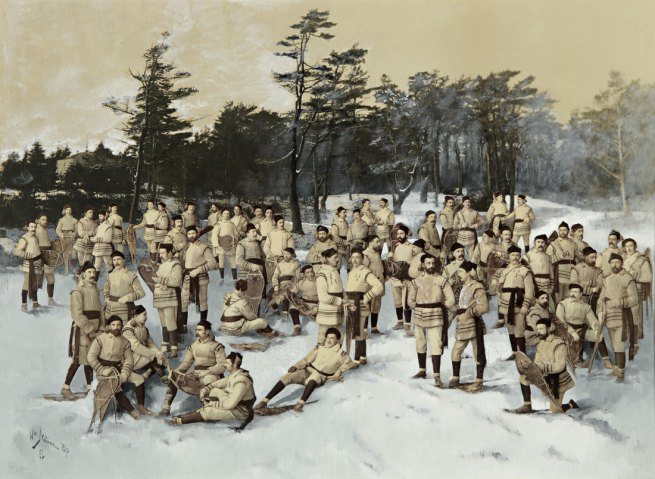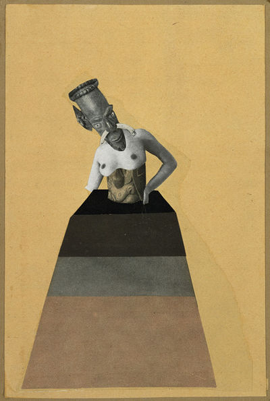Peter Horvath is a Canadian photographer whose revolves around video, sound, photo-based and new media art as well as digital art. His recent work focuses on taking images out of context, deconstructing and creating completely unique imagery through collage , drawing from his archive of mid-20th Century material. He uses juxtaposition and scale combined with saturated colour to produce surreal and sometimes humorous re-workings. Usually he mixes photos/images from different times and puts modern images with older images and links them together.
He first started using digital art in 1995 when his friend gave a Macintosh Plus, allowing him to discover the capability of computers and how they expand the range of edits you can do to make a photograph look different/better. He was also inspired by other photographers, Hannah Hoch and John Hartfield because the way they create new images with photo montage techniques e.g. cutting, gluing, rearranging and overlapping two or more images (less technological).

Horvath is most known now for intentionally displacing and disturbing anything remotely familiar or nostalgic, or both. Due to his discovery of computers he could now fulfill his desire fro his personal artist expression;
a feeling of freedom from the two-dimensional context had an effect on his exploration of social, creative and conceptual boundaries and identity issues, interlaced with psychic and emotional relations.

Technical
- Lighting – the hands in this photo montage have been shot in a shaded lighting as well as the city in the background (or made to look this way). As for the iceberg, it’s been taken in a lighter area and is highlighted/they used flash. The iceberg’s intensity is also high due to its saturation, Horvath has most likely done this because it is the main focus of the image because it’s positioned in the center. The city in the background’s exposure is lower and is faded to make it look more polluted. Horvath has put circles on the image to make it look like the light is reflectin off the camera lens as well as for several other reasons that will be exp-lained later on.
- Aperture – (DoF) the hands and iceberg have been sharpened whereas the city is blurred.
- Shutter Speed – There isn’t any motion blur.
- ISO – Both the city and the hands have high light sensitivity creating a grainier image allowing there to be more texture.
- White Balance – The colour accuracy for the iceberg is not accurate as the colour intensity has been heightened and has a very cold colour (blue) this is due to the contrast being higher. The city’s intensity of colour is much lower and has mostly brown tones to makee it look dirtier to get the message of it being too polluted across better. The warm colours of the circles are meant to remind you of the sun and the warmth from it so they have a higher contrast to intensify it.
Visual
Visual elements – The tone on the hands is darker in the shadowed area but the lighter areas have been highlighted. As for the city it does have much depth to it when it comes the darker tones of that section of the montage. The texture on the iceberg is very detailed and you can see that in the majority of the image making it look quite rough. The on 2D images are the circles and the hands, the iceberg and the city are 3D forms. The circles are also repeated.
Contextual
This photo montage also has a lot of context to do with environment and also the selfishness of some humans (social context). Firstly the misty and faded back background of the buildings are meant to represent pollution caused by humans and is believed to be in the background because it’s so unnoticed in reality. As for the iceberg in the hands of a human, this is meant to represent humans destroying the earth and global warming and the polar ice caps melting because of it and the warmth from the human hands is making the ice melt quicker. The iceberg in the hands has a double meaning, the image of the hands also represents third world countries struggling for clean water. Over all this photo montage is meant to be an example of all the major isues in the world.
Conceptual
The overall reasoning behind producing this photo montage is to make people more aware of the problems around them and how they all link to each other.


































